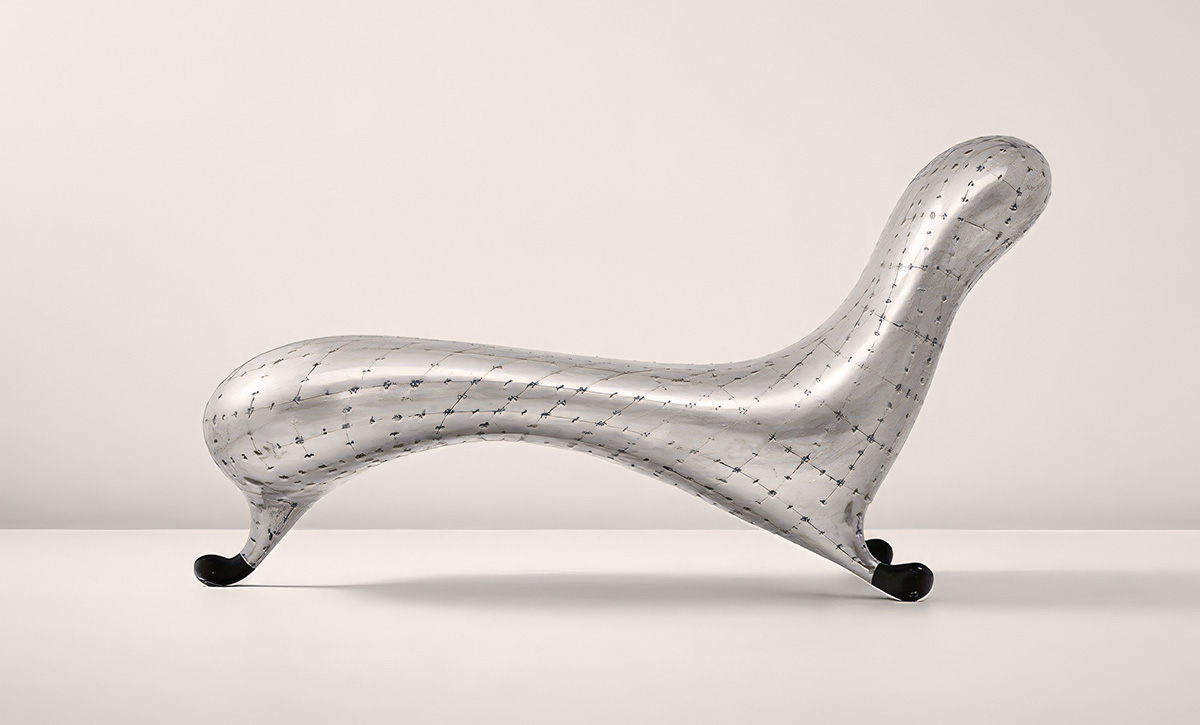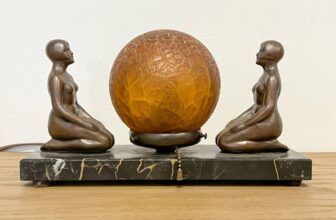
Marc Newson’s Most Famous Sculptures
When you hear the name Marc Newson, it’s easy to think of sleek aircraft interiors, futuristic furniture, and finely crafted watches. The Australian-born designer has touched nearly every imaginable design field , from commercial jets to jewelry , and yet, his sculptures hold a special place in the world of contemporary art. They’re not simply objects of beauty; they’re bold statements about form, material, and the human relationship to design.
This is the story of Marc Newson’s sculptures , what makes them famous, how they’re made, their value, and where in the world you can see them.
The Artist Behind the Work
Born in Sydney, Australia, in 1963, Marc Newson spent much of his childhood immersed in art and craftsmanship. He studied jewelry and sculpture at the Sydney College of the Arts, where he developed a fascination for fluid shapes and unconventional materials. This foundation shaped everything he later created.
By the late 1980s, Newson’s name began appearing in design magazines for his groundbreaking Lockheed Lounge , a sleek, riveted aluminum chaise longue that blurred the lines between furniture and sculpture. While the Lockheed Lounge is technically a piece of furniture, its artistic presence and rarity made it more at home in a gallery than a living room.
This blurring of boundaries between functional object and pure sculpture is at the heart of Newson’s practice.
Marc Newson’s Most Famous Sculptures
Marc Newson’s sculptural works are diverse , from freestanding art objects to furniture that is treated (and priced) like fine art. Some of his most iconic sculptures include:
1. Lockheed Lounge (1986–1989)
While often categorized as furniture, the Lockheed Lounge is a sculptural icon. Shaped like liquid mercury and covered in riveted aluminum panels, it’s an object that can’t be separated from its status as an artwork. Only about 15 were made, and they’ve broken records at auction , one sold for over $3.7 million in 2015.
Why it’s famous:
Revolutionary use of aluminum sheeting over a fiberglass shell.
Futuristic, biomorphic form inspired by both aircraft and the human body.
Featured in Madonna’s 1993 Rain music video, giving it pop culture status.
2. Orgone Stretch Lounge and Orgone Chair (1993)
These pieces are vivid examples of Newson’s exploration of smooth, continuous surfaces and hollowed forms. Made from bright lacquered fiberglass or aluminum, the Orgone works are highly polished and seem almost extraterrestrial in their curves.
Why it’s famous:
Introduced the “Orgone” concept, referencing Wilhelm Reich’s theories of energy.
Emphasized fluidity and inner/outer space through sculptural voids.
Displayed in galleries such as Gagosian, elevating them beyond design into fine art.
3. Pod of Drawers (1987)
Inspired by surrealist sculptor Salvador Dalí, the Pod of Drawers takes a functional object (a chest of drawers) and transforms it into a whimsical, organic sculpture. Leather-covered and shaped like a giant seed pod, it challenges the viewer’s expectation of what storage should look like.
Why it’s famous:
Early example of Newson’s fusion of surrealism with craftsmanship.
Part of major museum collections, including the V&A in London.
4. Event Horizon Table (1992)
Less “furniture” than sculptural presence, this table features a massive bronze disk balanced on equally striking supports. Its cosmic name matches its bold form.
Why it’s famous:
One of Newson’s first works in cast metal at a monumental scale.
Symbolic and mysterious , much like astronomical event horizons.
5. Voronoi Shelf (2008)
This sculptural shelving unit, made from aluminum and coated with bright colors, uses the Voronoi pattern , a natural mathematical structure found in cells, minerals, and coral. The result is both organic and highly engineered.
Why it’s famous:
Bridges nature’s geometry with high-tech fabrication.
Represents Newson’s fascination with biomimicry in sculpture.
6. Kelvin40 Plane (2004)
Technically a sculpture rather than a functional aircraft, the Kelvin40 is a full-sized plane-like form made from advanced composites. It was shown at the Fondation Cartier in Paris as a commentary on speed, design, and fantasy.
Why it’s famous:
Not functional as a plane, but a powerful sculptural exploration of flight.
One of Newson’s largest and most ambitious physical works.
What Marc Newson Is Known For
Marc Newson is often described as one of the most influential industrial designers of his generation, but in the context of sculpture, he’s known for:
Fluid, biomorphic forms – His works avoid sharp edges, favoring curves that seem grown rather than built.
Material innovation – From aluminum and magnesium to fiberglass and carbon fiber, Newson treats industrial materials as sculptural media.
Blurring boundaries – His sculptures are often “functional” objects , chairs, shelves, tables , but they operate as high-value artworks.
High craft meets futuristic vision – He uses meticulous hand-finishing alongside advanced aerospace manufacturing techniques.
Limited editions – Many of his sculptures are produced in extremely small runs, increasing rarity and value.
How Marc Newson Makes His Sculptures
Creating a Marc Newson sculpture is a labor-intensive process that mixes traditional craftsmanship with cutting-edge technology. His process generally includes:
1. Concept & Sketching
Newson often begins with hand sketches that capture the essence of a form. These sketches emphasize proportion and curvature rather than intricate detail.
2. 3D Modeling
Once the form is established, it’s translated into computer models. This allows Newson to test surfaces, balance, and structural feasibility.
3. Material Selection
Material choice is central to the final effect. Newson has worked with:
Fiberglass – For smooth, organic shells.
Aluminum & Magnesium – For aerospace-like riveted surfaces.
Bronze – For monumental, enduring pieces.
Carbon Fiber – For ultra-light, high-strength forms.
4. Fabrication
Fabrication varies by material:
Metal works: Panels are cut, shaped, and hand-riveted.
Fiberglass works: Molds are created, resin layers are built up, and the form is sanded and painted.
Cast metal: Lost-wax or sand-casting techniques are used, followed by extensive polishing.
5. Finishing
The surface finishing is almost obsessive in precision , polished to a mirror-like reflectivity or coated in flawless lacquer. Many works require hundreds of hours of sanding and buffing.
6. Limited Production
Sculptures are typically made in editions of 3–15 pieces, each signed and numbered, further cementing their value.
How Much Are Marc Newson’s Sculptures Worth?
Marc Newson’s sculptures occupy the high end of the design-art market. Prices vary based on rarity, size, material, and provenance, but here are some key benchmarks:
Lockheed Lounge – Record sale at Phillips auction in 2015 for £2.4 million (about $3.7 million).
Orgone Stretch Lounge – Can reach $500,000–$1,500,000 depending on edition and condition.
Pod of Drawers – Typically $150,000–$400,000.
Voronoi Shelf – Around $200,000–$600,000.
Unique commissions – Some large-scale works, especially in bronze or composite, can exceed $2 million.
Factors affecting value:
Edition size – Smaller runs fetch higher prices.
Condition – Many works are highly polished, so scratches can greatly impact value.
Provenance – Works exhibited at major museums or owned by celebrities command a premium.
Market momentum – Newson’s crossover appeal between design and fine art keeps demand high.
Where to See Marc Newson’s Sculptures
Marc Newson’s sculptures are held in both museum collections and private hands, but several public institutions and galleries have exhibited his work:
Museums & Public Collections
Museum of Modern Art (MoMA), New York – Holds examples of his furniture-sculpture hybrids.
Victoria and Albert Museum, London – Houses the Pod of Drawers and other early works.
Powerhouse Museum, Sydney – Includes multiple works from Newson’s early Australian years.
Design Museum, London – Has exhibited numerous Newson pieces in design retrospectives.
Galleries
Gagosian Gallery – Represented Newson’s limited edition works, often displaying his aluminum and lacquer sculptures.
Carpenters Workshop Gallery – Specializes in design-art and has shown pieces like the Voronoi Shelf.
Private Collections
While many sculptures are in private collections, some occasionally appear at auctions like Sotheby’s, Christie’s, and Phillips, offering rare public glimpses.
The Narrative of Newson’s Sculptural Journey
To truly appreciate Marc Newson’s sculptures, it’s worth viewing his career as a journey across disciplines. He began as a jewelry and sculpture student, drifted into furniture design, and then expanded into watches, bicycles, aircraft, and even space capsules for companies like Apple and Qantas.
But throughout, sculpture has been the purest expression of his design philosophy , the place where function becomes secondary to form and materials are pushed to their limits.
Newson’s works are monuments to possibility: What if a chair could be as precious as a diamond? What if a shelf could echo the structure of coral? What if a plane could exist purely as a fantasy object?
Why His Sculptures Matter Today
In a design world dominated by mass production, Marc Newson’s sculptures are defiantly rare and meticulously made. They speak to:
The value of craft in the digital age.
The blurred line between art and design.
A future where materials and imagination meet without compromise.
They are also investments , historically appreciating in value, driven by both art collectors and design aficionados.
Marc Newson’s sculptures stand as a testament to how far design can be pushed into the realm of art. His most famous works , from the Lockheed Lounge to the Voronoi Shelf , command millions not just for their rarity, but for their conceptual daring and flawless execution.
They can be found in the world’s top museums, private collections, and galleries, each piece a crystallization of Newson’s lifelong obsession with form, materials, and the human experience of objects.
In an age where 3D printing and AI threaten to make design instant, Newson’s sculptures remind us of the magic of human vision shaped by human hands , a slow, exacting process that turns raw material into a timeless object of wonder. image/ artnet




